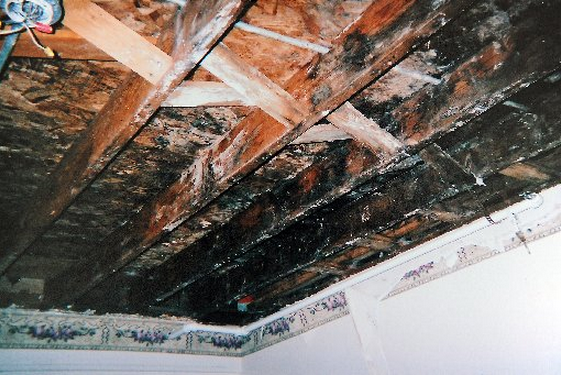Stories about the onset of mold-induced illness read like something out of a horror film. People who were perfectly healthy days or weeks ago develop sudden nosebleeds, rashes, headaches, and respiratory problems so severe that they must be hospitalized in some cases.
The culprit is an invading organism that often spreads invisibly, contaminating work and living spaces. Attempts to kill it can often cause it to spread if proper procedures aren’t followed.
Unfortunately for building owners and managers, and contractors, this is not the stuff of fiction, but a very real, and often very costly problem. Tens of thousands of lawsuits have been filed over mold-related illnesses, resulting in multi-million dollar settlements and expensive relocation and remediation efforts.
With the right tools, however, mold can be prevented from growing or eliminated before it becomes health-threatening. The key, to use an old adage, is to remember that an ounce of prevention is worth a pound of cure.
Maintenance software solutions with inspection tracking capability make it easy to schedule and perform routine checks of mold-prone areas in facilities. Schedule groups can then be created based on the official mold remediation guidelines provided by the Environmental Protection Agency (EPA).
That way, facilities managers can be sure that proper mold mitigation measures are being taken, and also be able to prove it with a solid book of record if needed. The following are a few critical areas that every facility manager should focus on when creating their mold prevention and detection strategy.
+ Identify the Source
In order to zero in on the sources of mold growth, inspectors should be on the lookout for moisture. Leaking pipes, porous insulation and linings, deteriorating roof materials, and HVAC problems are all leading causes of moisture accumulation and should top the list of inspections.
Other building materials, like vinyl wall paper and wood paneling, can create a vapor trapping effect, which can cause unseen mold growth. Mold can also grow beneath carpet and pads, which can be challenging to detect.
In areas that smell musty but where there is no visible mold growth, it is important to bring in experts who have the tools to locate sources of moisture. Moisture meters and humidity gauges can be used in these cases to perform more thorough checks.
By scheduling and tracking these inspections in your maintenance software system, it will be easy to see which areas have been checked and which checks have been performed. These systems can also be set to automatically generate a work order in the event of a failed inspection, minimizing turnaround time and ensuring that mold growth is halted quickly.
+ Provide Proper Gear and Procedures for Anyone Exposed
Mold can be extremely dangerous. It is vital to ensure that individuals who will be exposed to mold in any way are wearing the proper Personal Protective Equipment (PPE).
Masks and gloves should always be used—but it’s important to make sure that the correct types are used. Some materials may require different types of gloves, and the type of mask used depends on the level of contamination and other factors.
It is also important that anyone performing inspections or remediation efforts be knowledgeable about mold and the ease with which it can spread if it isn’t handled properly. For instance, the EPA generally advises against the use of biocides like chlorine bleach when cleaning mold, as these chemicals will do nothing to eliminate the moisture problem that led to the growth of mold in the first place.
In some cases, it may be necessary to place mold-contaminated materials in sealed bags before disposal. Carrying these materials in the open can cause mold spores to spread to other vulnerable areas.
Considering the number of variables that must be accounted for when addressing mold problems, it is important to stay organized. A maintenance software system is a great way to centralize critical data so that it is easily accessible to those who need it.
+ Create Solid Records for Future Reference
When it comes to inspections, it’s important to have complete records documenting all mold prevention efforts. OSHA, for instance, has regulations regarding the use of masks when carrying out mold remediation efforts; if the use of these PPE devices is well documented in your maintenance software system, there will be no problem proving compliance.
In extreme cases, when employees pursue litigation over health problems stemming from alleged mold exposure, a complete record of compliance is one of the strongest lines of defense a business has at its disposal. History shows that this is no trivial matter: lawsuit settlements have been known to reach upwards of $10 million; easily enough to ruin a company.
Lawsuits stemming from toxic mold intoxication have proven lucrative for personal injury attorneys, providing them with a strong incentive to pursue any cases they hear about. It’s thus important that companies protect their employees from this threat, and that they do a good job of documenting their compliance.
As with most forms of regulatory compliance and regulatory maintenance, mold prevention and remediation doesn’t need to be overly complicated. With the right tools to organize, schedule and track inspections, facilities managers can easily ensure that their buildings are free from mold.

